
Under BWSC theme “Dream bigger. Go farther,” Bridgestone supports challengers in achieving their dreams.
Let us introduce the press conference where the Tokai University solar car team announced the latest model of the Tokai Challenger—a car competing in the BWSC19.
Always we are challengers, constantly aiming to rise to the top.
Tokai University solar car team introduces model for BWSC19
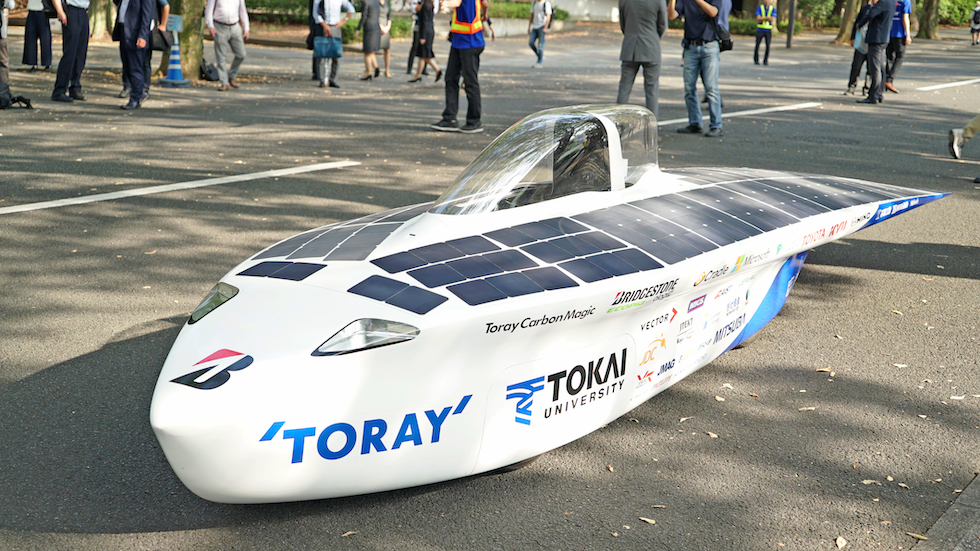
On Sept. 3, the Tokai University solar car team held a press conference to introduce the car they will be entering in the 2019 Bridgestone World Solar Challenge (BWSC). Kohei Sagawa—assistant professor of electrical and electronic engineering and newly appointed team general manager—gave a detailed description of the 2019 Tokai Challenger, whose development process was a “challenge against the limits of determination.”
Building off of the 2017 Tokai Challenger
Tokai University is a veteran of the competition, having participated since 1993, when it was still the World Solar Challenge (WSC). The team’s consecutive wins in 2009 and 2011 have brought it considerable attention, both in Japan and overseas.
And yet, for such a dominant force, the team decided not to try to be the first to present their new car and ended up last among the Japanese teams to arrange a press conference.
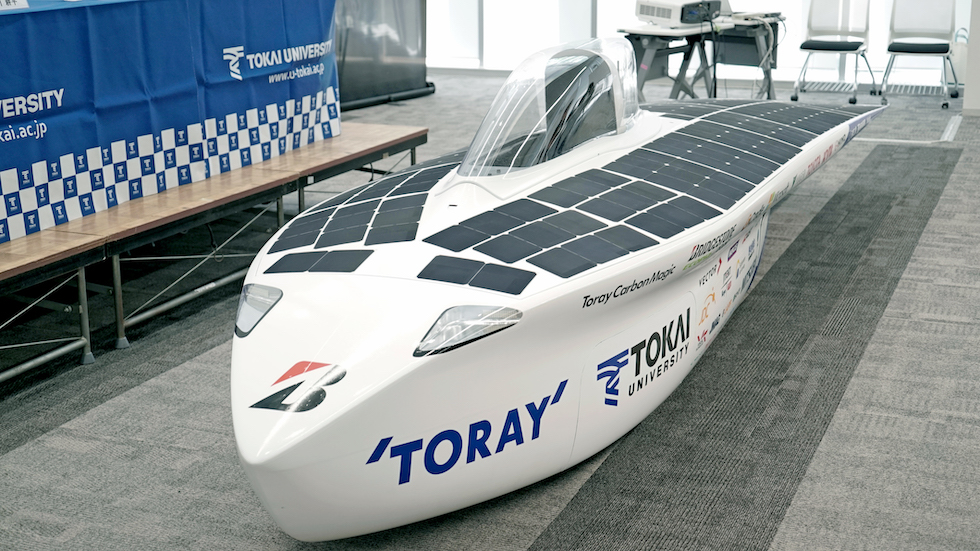
Sagawa:This may have been a tactical move. “What I noted in the 2017 race was that many teams were choosing to incorporate solar panels designed for satellites, which are much more energy efficient than single crystal silicon solar panels , and that many teams were choosing catamaran cars,” said Sagawa. “I forecasted that many teams would switch to mono-hull cars—which we choose in 2017. Looking at all the press announcements, I felt reassured knowing I had read the winds correctly.”
The 2019 Tokai Challenger incorporates the same mono-hull concept as the 2017 model, but with an improved design and enhanced technologies. The team used the feedback from the previous race to push the car’s level of performance and perfection.
Sagawa:“Although we experimented with different models and forms, in the end, we decided that the mono-hull concept we choose in 2017 worked best for us,” said Sagawa. “Instead, we focused on the problems we had not quite managed to solve in time for the 2017 race, as well as the issues that arose from the race itself. The result is a model that dramatically perfects the car’s performance.”
Here are a few of the car’s features.
The aerodynamic drag was reduced further from the 2017 car and performance in crosswinds was improved by improving the accuracy of the numerical simulation and examining the detail body shape. The team also investigated the air flow inside of the car and around the tires, with the goal of improving practical performance instead of theoretical performance.
Sagawa:“We used a powerful server with tera-byte size memories and a pair of HoloLens mixed-reality goggles—provided courtesy of Microsoft—to simulate air flow around the car,” Sagawa said. “As a result, we realized great improvement of the car performance with highly precise design environment.”
The team also managed to reduce the car’s weight by ten percent, and they shifted the driver’s seat 220 mm forward to improve the generation efficiency of solar modules. They also made detailed changes, such as shifting the split lines to reduce the time for raising and tilting the upper body. Everything the team did, they did to either shed one more gram of weight or to cut one more second off their time.
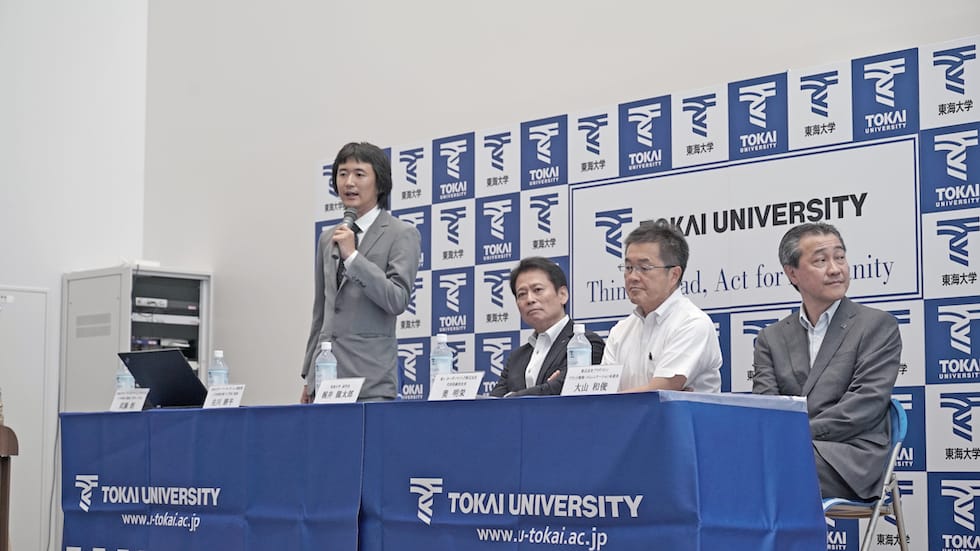
Sagawa:“We are still challenging with weight,” Sagawa said. “The team worked with our sponsors, 'TORAY' Industries and 'TORAY' Carbon Magic, to go over all the car-related issues from 2017 and achieve a good balance between durability and weight. We’ve managed to cut between 15 and 20 kg so far, but we’re still pouring over every detail to see if there’s a way to shed even one more gram.”
The above covers only a few of the improvements the team has made to the 2019 Tokai Challenger. This year’s model represents a perfect fusion of the team’s experience and the cutting-edge technologies of the future—a fact made tangible through test run data at the courses in Japan.
A team defined by experience and the future
It’s not just the car; even the team represents a mix of experience and the future.
Representing the future is Sagawa, the new team general manager. During the press conference, Ryutaro Kajii, vice-president of Tokai University, conveyed his hope that Sagawa would bring a new vitality to the team.
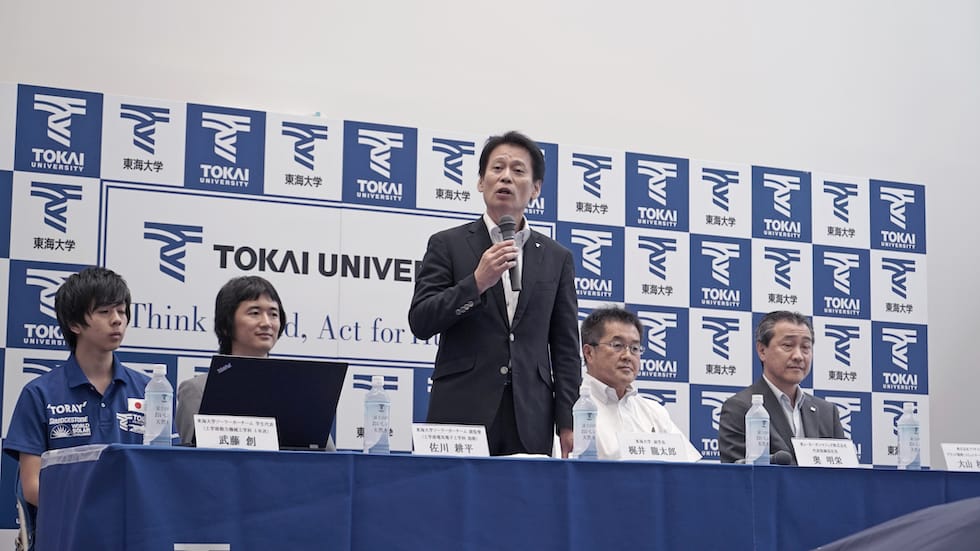
Kajii:“Prof. Hideki Kimura has long served as the team’s general manager,” Kajii said. “However, due to his age, we have decided to pass his role on to Prof. Sagawa. I hope that with his fresh perspective, he will be able to breathe new life into the team.”
Sagawa was actually in the first group of students to attend the Tokai University Challenge Center—the solar car team’s home. Sagawa has been involved in solar car racing since 1999, when he participated in the WSC while still in high school. After graduating from university, he began working at Subaru, where he gained experience in developing cutting-edge hybrid cars and electric vehicles (EVs). With his experience and origins in solar car racing, it is no wonder the university hopes Sagawa will bring something new to the team.
Not everything is new, however. Many of the students on the team are returning veterans with plenty of experience—which Sagawa says is crucial for the team.
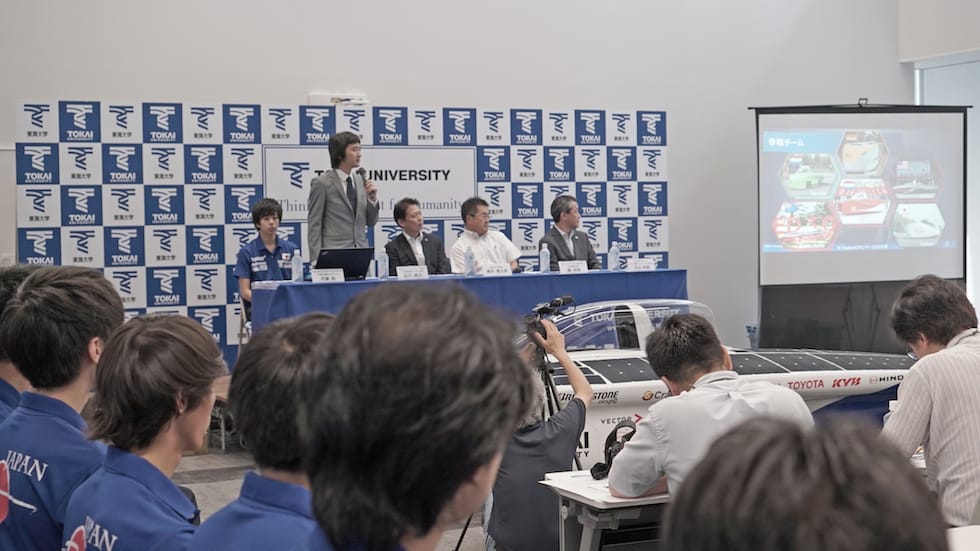
Sagawa:“Arata Muto, who is in his fourth year student at the department of prime mover engineering, is the team leader,” said Sagawa. “He also served as leader in 2017. Many of the other students have had a lot of overseas experience. I believe these qualities will give the team a huge advantage in navigating the race and assessing local information.”
This year, 27 team members—including some students attending the university from abroad—will be traveling to the race site. Some of the team members will remain in Japan, from where they will provide logistical information like weather forecasts to the team on site. The drivers should prove to be a phenomenal force, says team leader Muto.
Muto:“The drivers will include Prof. Sagawa, Sidd Bikkannavar, special advisor to NASA who also drove for us in 2017, as well as Mikiaki Onoda from year three and Takeharu Itsubo from year two,” said Muto. “Onoda and Itsubo competed in the South African Sasol Solar Challenge last year. Although they’re not quite as experienced as Prof. Sagawa, they are both highly skilled drivers. I think they’ll be contributing quite a lot to the race.”

It is an impressive roster that underscores the university’s nearly two decades of involvement in solar car racing—as well as the team’s approach of using experience to build the team’s future.
“Always challengers, constantly attempting to rise to the top”
The race is a month and a half away.
The team will continue tweaking the car up to the last minute, and then ship it to Australia in late September, courtesy of a sponsor.
A test run in northern Japan is already on the schedule. The team will be testing not just the car, but their entire racing operation, from tire changes to mandatory stops at “control points” (basically, pit stops), in order to shave one more second off their time.
Muto:“Everyone on the team, including myself, has gone through a lot of ups and downs to get to this point,” said Muto. “But we are all united in our desire to place well and to give the race our all. The BWSC is simply the proving ground of our efforts to date. That means the amount of effort we put in over the coming days is going to determine our final result. I want all of us to push ourselves until the very end.”
Sagawa:Sagawa followed up by reminding everyone of the car’s name: the Challenger. “It means we are always challengers,” he said, “constantly attempting to rise to the top of the world. We’ll do our best to achieve that goal.”
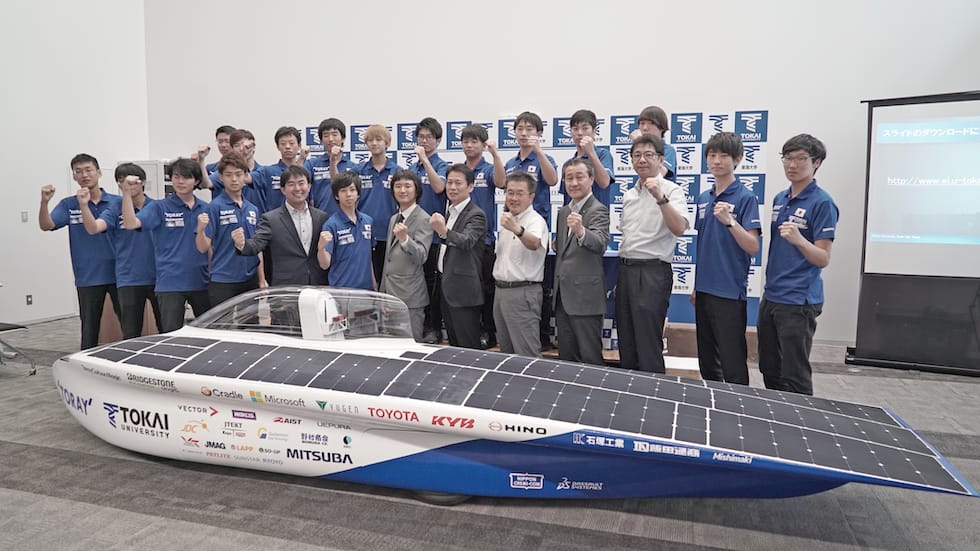

-

Kome, the popular Golden Retriever gives it a try! – A dog jacket that uses solar energy
-

Dressing up tires with stickers for model cars! BWSC collage art piece by Funny Dress-up Lab
-

No blades! A pole-shaped wind turbine, Vortex Bladeless, generates power by shaking.
-
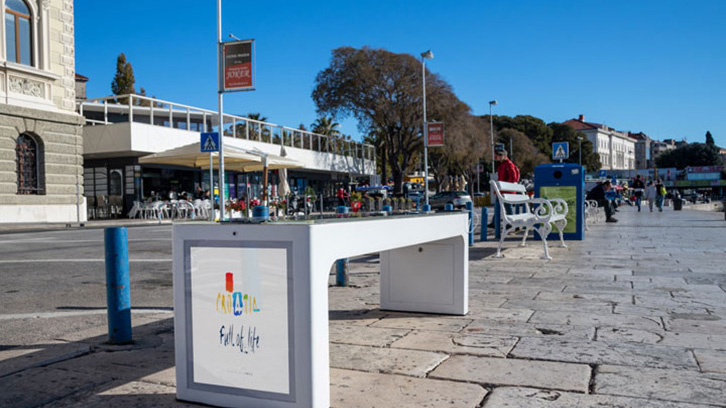
Solar-powered bench Steora as a device charger, Wi-Fi hotspot, advertising display, and CCTV!

-

Kome
Kome is a fluffy, one-year old Golden Retriever. She inherited the territory from her owner’s previous dog, ef. Affectionate and playful, Kome melts everyone’s heart with her sweet baby face in contrast to her impressive physique.efrinman Kome’s owner. She is an illustrator popular for her dog illustrations and comics.

Kome, the popular Golden Retriever gives it a try! – A dog jacket that uses solar energy
-

Funny Dress-up Lab
Collage artist. Fascinated by various aspects of decorative stickers, such as their vivid colors, unique shapes, misregistration, and the fact that they are now dead stock, he has been creating collage works using solely decorative stickers without altering them in any way. He will cease creating these works when the current stock in the world runs out.

Dressing up tires with stickers for model cars! BWSC collage art piece by Funny Dress-up Lab
-

Taku Omura
Product designer. Taku Omura designs personal items, such as household goods and stationery, and develops his own products. His tweet with a hashtag, making proposals for corporate gifts without being asked, often becomes a trending topic on Twitter.

Give it a try! Taku Omura elaborates on solar-powered candy crafts with a magnifying glass
